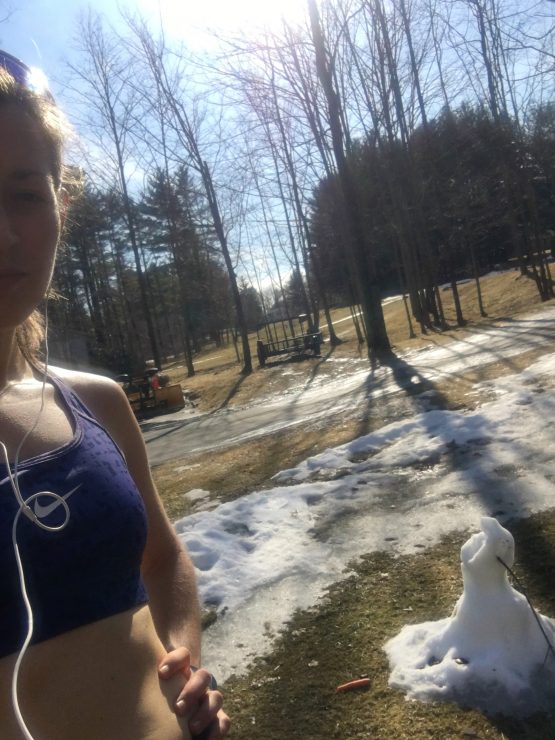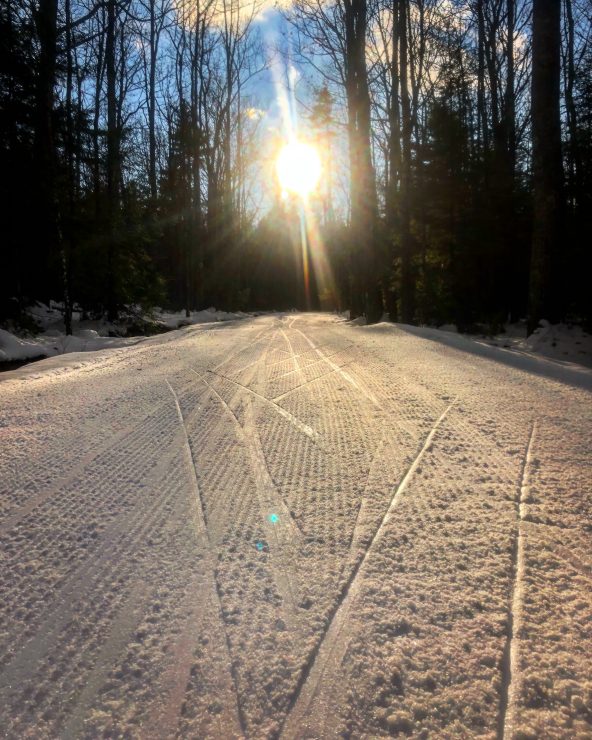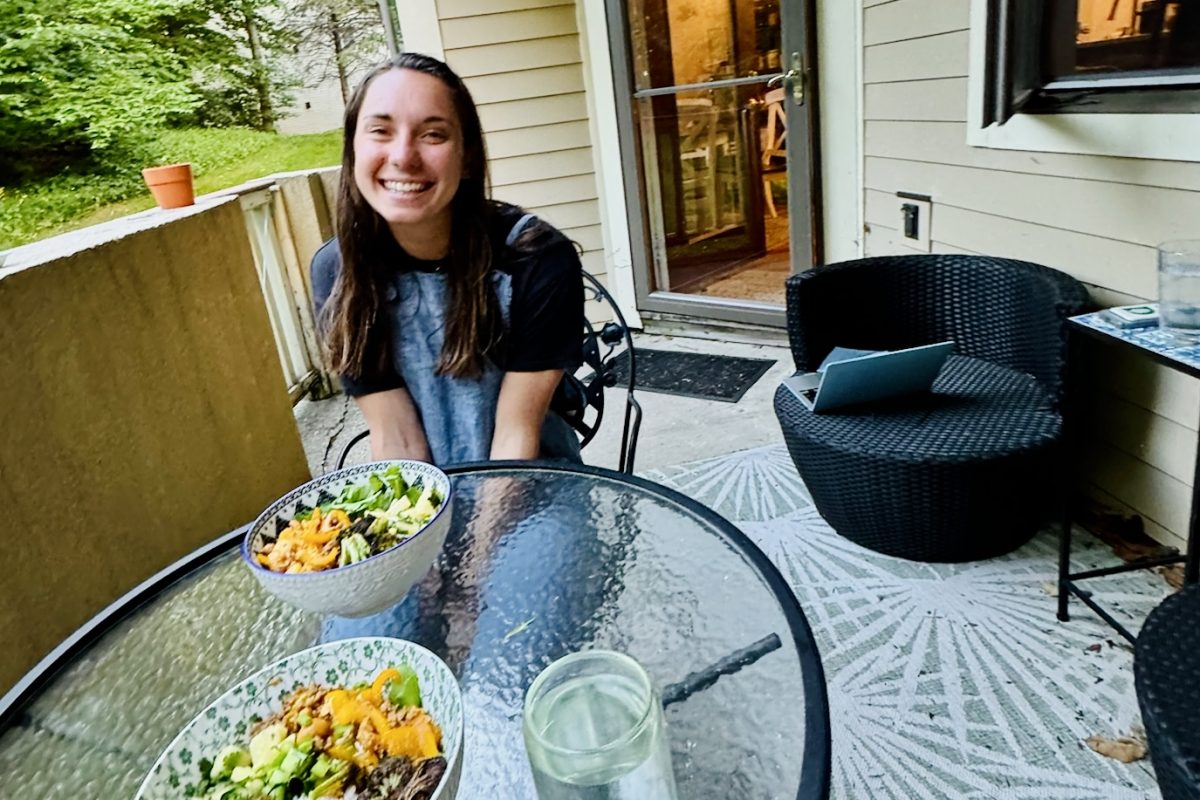
At some point in the past seven months you signed up for the American Birkebeiner. Maybe you’ve done it before, maybe you haven’t. Either way, you’re now committed to skiing the American Birkebeiner, excited to experience “Birkie Fever,” whether for the first time or the 20th time. No matter your level of skiing or your goals for the Birkie, tackling a 50-kilometer ski race is no small feat. Realistically, for many people who participate, training full time is not an option. Working full time, dealing with normal day to day life — family, kids, pets — takes up most of our time and fitting training in when possible is a reality. This amplifies the challenge of preparing for a 50 k race.
Logging training hours was easier and more convenient in the summer months with warm weather and extra daylight. Now with three months to go until Birkie weekend, daylight is limited, work is busy and there are limitations to getting training in. The key questions is how do you continue to train into the late fall and early winter? What can you do now, with three months to go, to prepare for 50+ k of skiing?
These are great questions and important ones since you are now signed up to ski 50 k. That’s 31 miles sliding over snow. If you chose the classic race, it’s 55 k — that’s 34 miles. For those of you who do the classic race kudos to you. My back hurts just thinking about it! But don’t worry you could have signed up for a 50 k running race. I mean at least on skis you get to glide, right?
But in all seriousness, the Birkie is a one of a kind experience that every skier should try to participate in. Three months is plenty of time to make a few improvements to your training, work around the limitations our day to day life present, and hopefully, make those 50k a little easier! Below I’ll discuss some of the limitations faced and possible ways to address them.
When I started writing this it was a Thursday in late November. I was inside, riding my bike trainer trying as my long easy workout. My body was telling me I should be skiing but the rain, green grass, and pitch-black outside at 5:00 pm told me otherwise. Juggling work, life, and training can be especially challenging this time of year. Depending on where you live there are different limitations to late fall and winter training. Those can be:
- Time constraints: make all of your time training quality “on-time” if you are over obligated with life commitments.
- Lack of daylight is an added challenge once daylight savings hits in late fall. If you can get outside in the dark before or after work safely that is great but not always an option. If you can, secure yourself a reliable headlamp and get after it. Some alternatives to outdoor training are strength programs, accessing a spin bike, or other indoor workout facilities. They aren’t the most fun options, but you just have to get it done sometimes!
- Lack of snow: depending on where you live and what kind of winter it is you may not even have the option to get on snow much before the Birkie. Lack of snow leads to the fourth limitation, a culmination of the first three- lack of time training on snow.
- Once there is snow- lack of time training on snow. Getting on snow to train for a ski race is obviously one of the best ways to train but getting on snow often may not be an option for you. The days you can get on snow are valuable and important to your training.
These limitations are hard to workaround. Here are some ways you can focus your limited time to tap into your best effort over 50 k.
What to focus on and how to address these four limitations:
Build up a base and be consistent. No matter your level of skiing, the more base you can build up and the more consistent you can be with your training the better. That base will be there to tap into when you’ve been skiing for several hours. So take time to determine what you can schedule during the busiest parts of your week. Can you get in a few short or medium distance training sessions during the week? Try for 30-90 minutes if you can. Use those days to get in high-quality training sessions. These could be skiing, roller skiing, running outside or on the treadmill, hiking, biking outside or inside, swimming, anything aerobic that builds up your endurance. If a strength workout is what you can get in, then do that! A couple of short workouts during the week may seem a long way from skiing 50 k but every little bit adds up. When you are 40 k into the race and your body is able to harness just a little bit more from that base you’ve built up, you will thank yourself!
Two specific training sessions to fit into your training are a long slow distance (LSD) day and a threshold day. These are your endurance builders. Is there one day a week you can get in a long distance workout (a 2+hour workout)? If you can get out for an easy 2+ hour training session one day a week every week until the Birkie that adds up to some serious base building. And remember, that’s only a one day per week commitment. Can’t get quite that much time to work out in one day? Get in as much as you can: every little bit adds up.
The second specific training session is a threshold workout. A threshold workout is time efficient — it is a great way to get in a high-value training session in limited time. Getting in an entire threshold workout can be an hour to an hour and a half depending on the length of your intervals. For a threshold workout, a “threshold pace” (also known as L3) means a pace faster than a long-distance ski but not a hard race pace. I like to think of it as a consistent pace where you can speak but only in brief responses, holding a regular conversation is not easy. You should be working hard at an increased pace that you can hold for an extended period of time. If you are just beginning to experiment with threshold workouts for your Birkie training, try 2 x 10 minutes, then build up in time or the number of intervals with some of the breakdowns listed below. Rest for 3-5 minutes between intervals.
Sample workout:
- 15-minute easy warmup
- Threshold intervals: choose your breakdown- 3 x 10 min, 2 x 15 min, 3 x 15 min, 2 x 20 min, 1 x 30 min, 2 x 25 min Rest 3-5 minutes between intervals.
- Optional added challenge: add some pickups into the thresholds, 10-30 seconds, then bring it back down to threshold level
- 15-minute easy cooldown
Getting your LSD and threshold workouts done on snow is ideal, but they can be effectively done running, roller skiing, biking, whichever activity you are able to do at that time.
Turn a weakness into a strength
Choose a “weakness” to work on for the next three months and you will turn this “weakness” into a strength — adding another tool to your arsenal to use on race day. This is my favorite way to make an improvement to your skiing that does not have to take a lot of time. It gives you a path to improvement and will help you ski better over 50 k.
Strengthen your core
Core strength is an easy improvement to make. Our core strength is fundamental to skiing in general and particularly to skiing with consistent power. A strong core helps stabilize ourselves and hold proper technique when skiing.
Working on core strength requires little if any equipment, you don’t need daylight, snow, or prolonged amounts of time. Ten minutes of core three or four days a week is cumulative. It can be done anywhere at any time. And looking at three months until race day, those core exercises will add up.
10-Minute Core Workout
Complete each exercise for 30 seconds, rest 15 seconds in between, repeat twice with one minute between sets
- Plank
- Bicycles
- Toe touches
- V-Sit
- Leg Raises
- Leg hold
Search google if you need to see demonstrations of the exercises
Spend time on technique
Once you get on snow (or roller skiing), practicing certain aspects of your technique and transitions can pay off in a long race. Are you stronger with V1 technique on one side than the other? Then whenever you are on snow practice V1-ing on your offside. Being comfortable with V1 on both sides pays dividends in a long race, especially on the rolling and hilly parts of the Birkie and maneuvering around other skiers.
Work on transitioning from V2 to V1, pacing yourself over 50K, transitioning from double-poling to striding, and cornering.
These may seem like small things, but smooth transitions, and things like steady pacing compound over 50 k. If you are able to get on snow 1-2 times a week, choose the workout you are able to get in that day (long distance ski, threshold workout, easy hour-long ski- whatever fits your schedule) and also choose a technique goal during that ski.
The following was written by Katie Miller, a former University of New Hampshire (UNH) ski racer. She currently lives in southern N.H. where she does her best to “juggle a full-time job as a criminal defense investigator with the desire to get outside and ski all day everyday!”




